My parents have an organic permaculture farm on Moloka’i, with vegetables and ducks, and LOTS of varieties of tropical fruit. There are common ones like bananas (at least five varieties), papaya and lilikoi (passionfruit); Pacific specific ones like ohia ‘ai (mountain apple) and breadfruit; slightly exotic ones like cacao (chocolate), lychee and carambola (starfruit); and really exotic ones like rambutan, jaboticaba, and canistel (eggfruit).
I mentioned the last one on facebook, and a number of people asked what a canistel (which I actually misspelled as canistelle) is.
This is a slightly green canistel (Pouteria campechiana) on the tree:
And a ripe one:
It’s also known as eggfruit, because the flesh is the deep yellow of an egg yolk, and, rather than being juicy like most fruit, is dry and flaky in the same way that a hard-boiled egg is dry and flaky.
It’s really hard to describe the flavour of canistel, but the closest comparison is that it is like a really, really good pumpkin pie.* It’s rich, and dry and flaky, and very sweet, with a bit of a hint of spice like cinnamon and cloves.
Canistels are native to Mexico & Central America, but my parents have been growing them for almost 30 years. This is their original tree:
Canistels form mid-sized trees (about 6-8 meters tall), and bear fruit in the spring and summer, within three years of being planted.
They are delicious eaten fresh, but I also make canistel bread, using a recipe very similar to one for a banana bread, and I’ve known people to make canistel pies by simply mixing the flesh to a smooth pulp and pressing it into a cooked nut crust. Yum!
* My apologies to the non-North American readers who are thinking “Well, that’s not really very helpful!” I can’t think of another description.

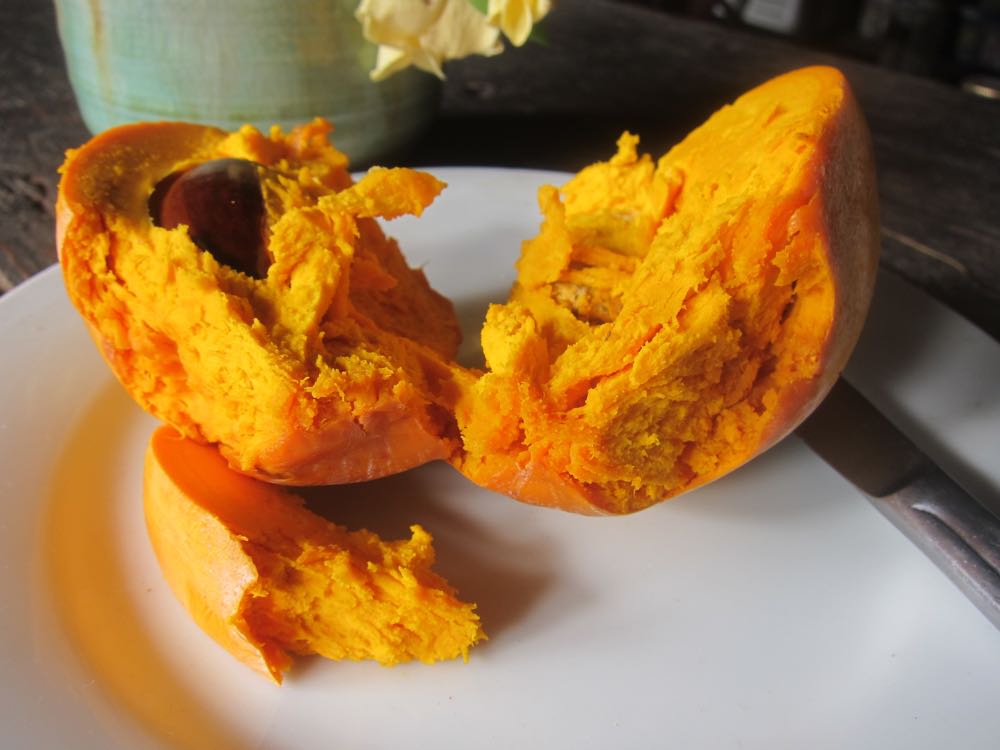
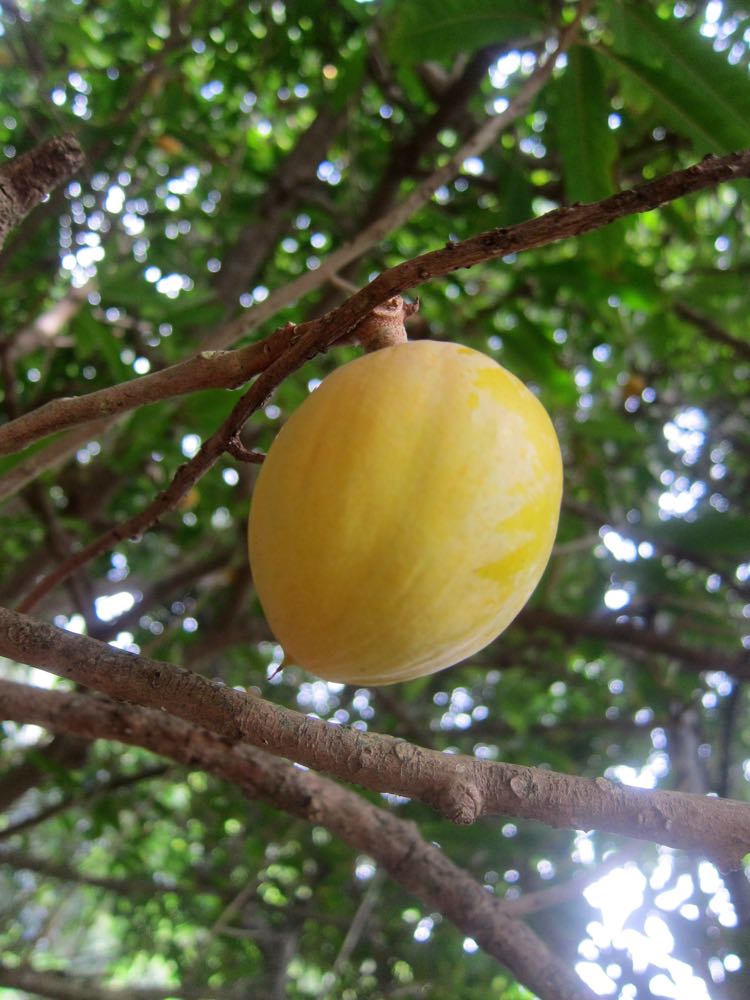
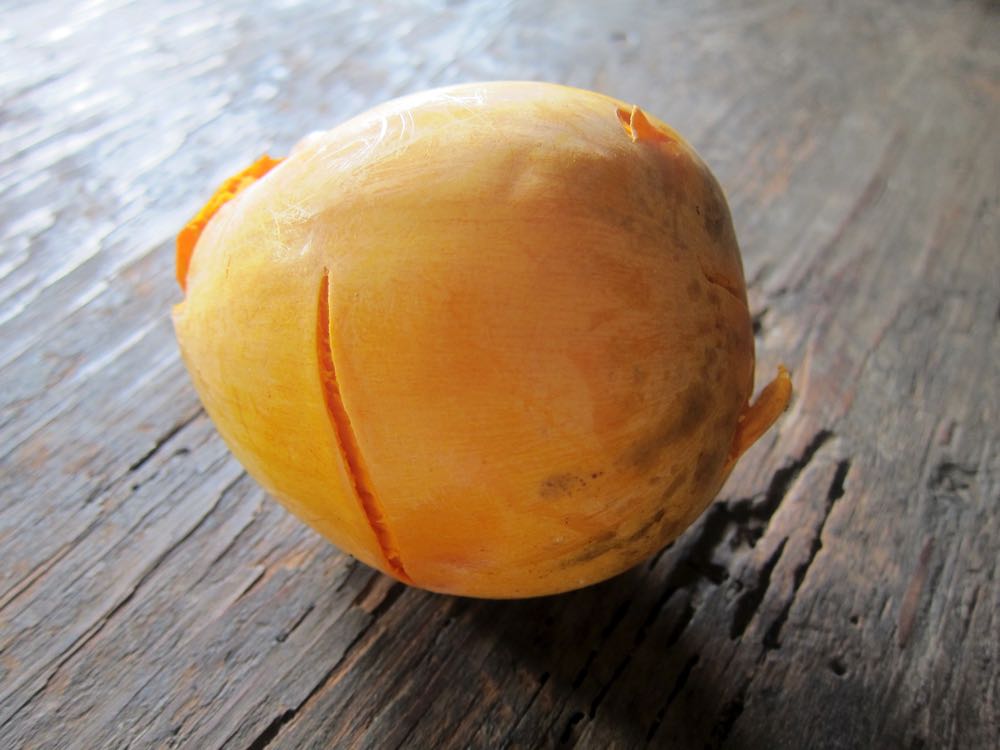
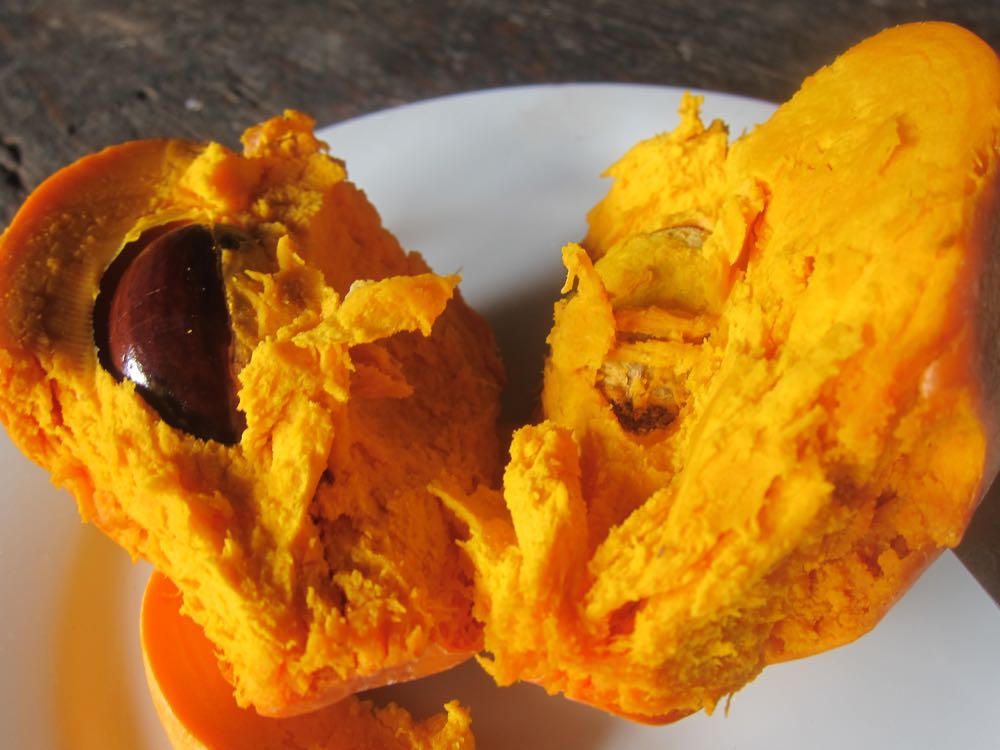
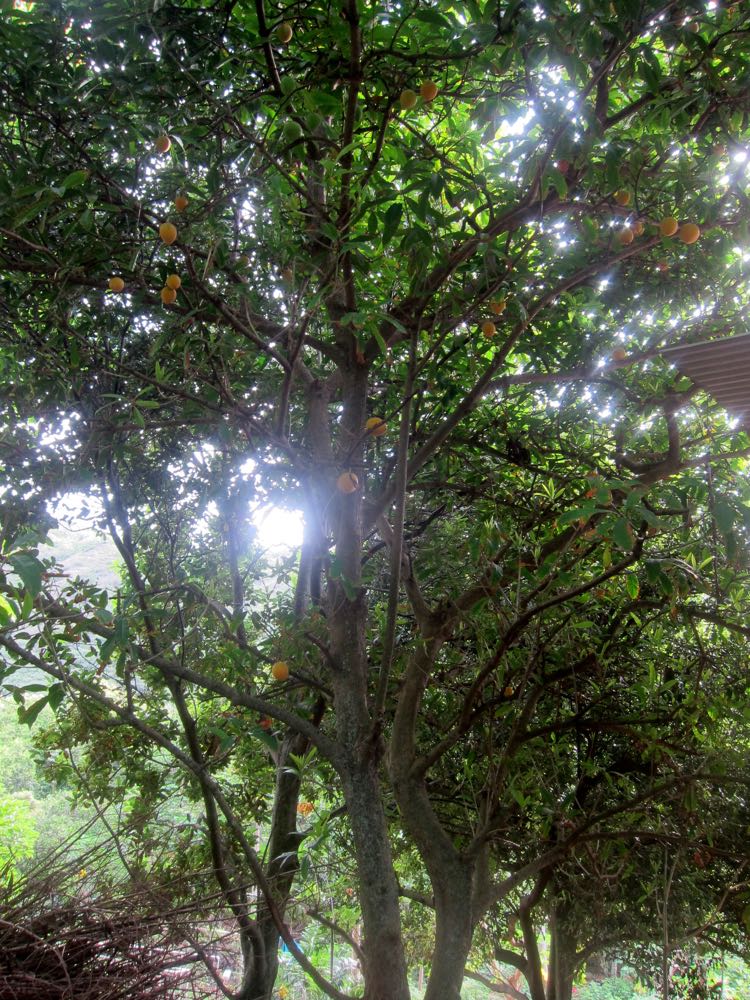
It sounds absolutely delicious and I do so wish you were able to bring these things back with you! But I understand why not.
oh what a lovely life you have .one can only dream .god bless love following your blogs take me to a new world every time x
How interesting! I wonder if canistels would grow in my little Himalayan valley? Bananas, avocadoes, and papayas grow here. Do your parents sell seeds & can you grow canistels from seed?
You can grow them from seed, but I’m not sure if they are true to type from seeds – some canistel are much better than others. You could probably get seeds from a source much closer to you, as I know they are grown in Southeast Asia.
Remarkable! That picture of the open fruit makes it look like a cross between an avocado and a fresh loaf of bread.
Never heard of them! How wonderful – they sound just delicious!
Yeech! I remember trying one in Hawaii. And..well…it wasn’t popular. To us (the staff of the organic food coop, of which non-native Hawaiians were in the minority), it actually tasted a bit like an egg. Sounds like we missed something. I know it’s eaten, because you can find campeche in the Mexican markets. I never had any as a kid, though. Maybe next time I travel to the Mexican market, I’ll try campeche (the Mexican word), again.